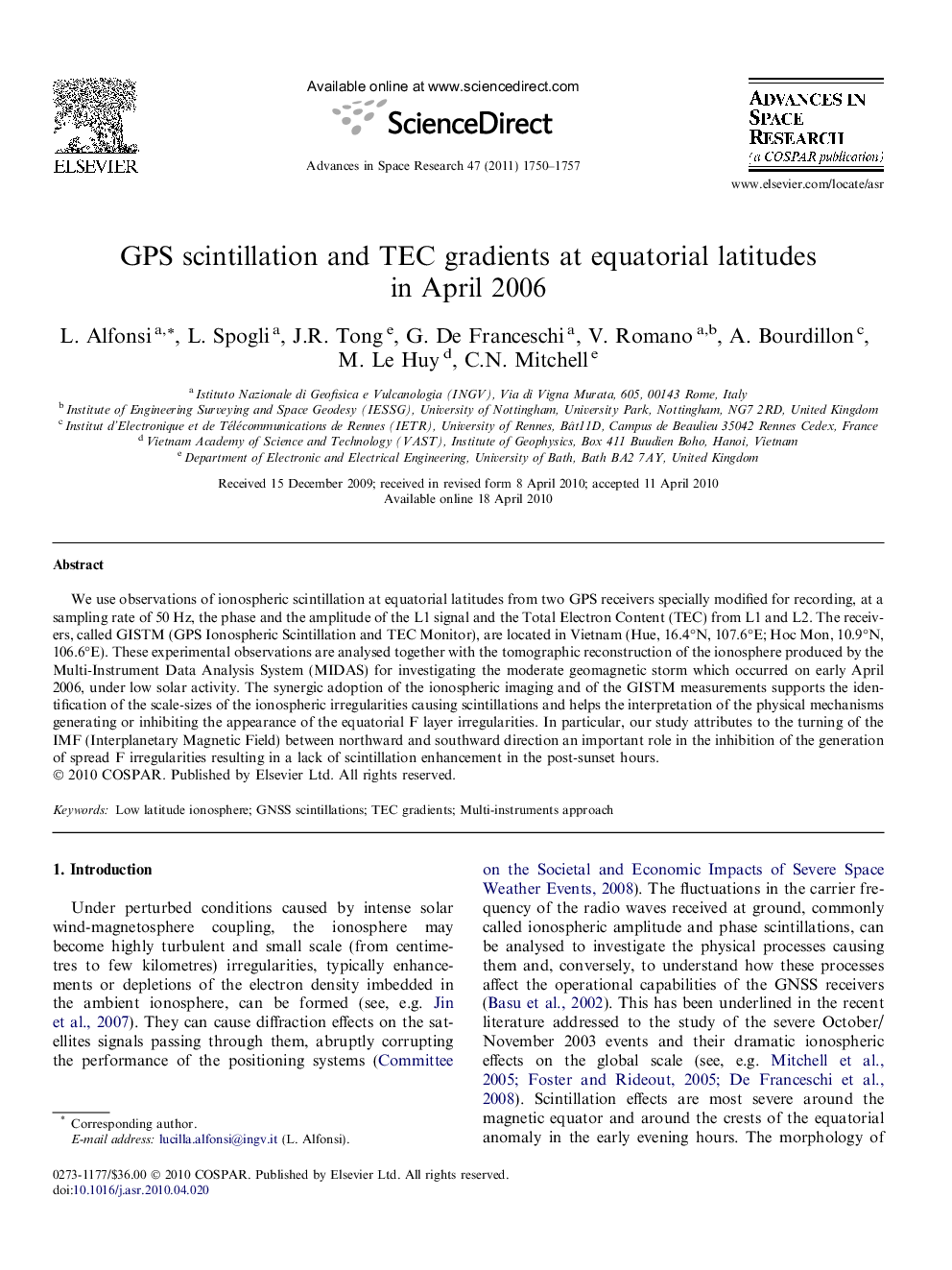| Article ID | Journal | Published Year | Pages | File Type |
|---|---|---|---|---|
| 1766075 | Advances in Space Research | 2011 | 8 Pages |
We use observations of ionospheric scintillation at equatorial latitudes from two GPS receivers specially modified for recording, at a sampling rate of 50 Hz, the phase and the amplitude of the L1 signal and the Total Electron Content (TEC) from L1 and L2. The receivers, called GISTM (GPS Ionospheric Scintillation and TEC Monitor), are located in Vietnam (Hue, 16.4°N, 107.6°E; Hoc Mon, 10.9°N, 106.6°E). These experimental observations are analysed together with the tomographic reconstruction of the ionosphere produced by the Multi-Instrument Data Analysis System (MIDAS) for investigating the moderate geomagnetic storm which occurred on early April 2006, under low solar activity. The synergic adoption of the ionospheric imaging and of the GISTM measurements supports the identification of the scale-sizes of the ionospheric irregularities causing scintillations and helps the interpretation of the physical mechanisms generating or inhibiting the appearance of the equatorial F layer irregularities. In particular, our study attributes to the turning of the IMF (Interplanetary Magnetic Field) between northward and southward direction an important role in the inhibition of the generation of spread F irregularities resulting in a lack of scintillation enhancement in the post-sunset hours.
